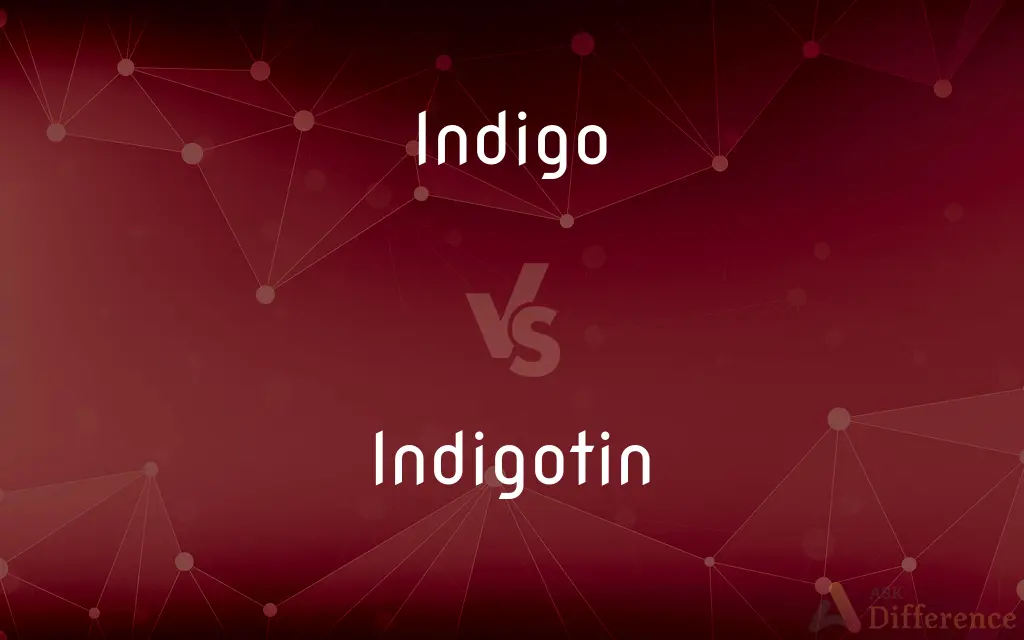Indigo vs. Indigotin — What's the Difference?

Difference Between Indigo and Indigotin
ADVERTISEMENT
Compare with Definitions
Indigo
Indigo is a deep color close to the color wheel blue (a primary color in the RGB color space), as well as to some variants of ultramarine, based on the ancient dye of the same name. The word "indigo" comes from the Latin for Indian as the dye was originally exported to Europe from India.
Indigotin
See indigo.
Indigo
Any of various shrubs or herbs of the genus Indigofera in the pea family, having pinnately compound leaves and usually red or purple flowers in axillary racemes.
Indigotin
(organic compound) A dark blue compound that is the principal dye in indigo
Indigo
A dark blue crystalline compound, C16H10N2O2, that is obtained from these plants or produced synthetically and is widely used as a textile dye. Also called indigotin.
ADVERTISEMENT
Indigotin
See Indigo blue, under Indigo.
Indigo
Any of several related plants, especially those of the genera Amorpha and Baptisia.
Indigotin
A blue dye obtained from plants or made synthetically
Indigo
The hue of that portion of the visible spectrum lying between blue and violet, evoked in the human observer by radiant energy with wavelengths of approximately 420 to 450 nanometers; a dark blue to grayish purple blue.
Indigo
A purplish-blue colour
Indigo
An indigo-colored dye obtained from certain plants (the indigo plant or woad), or a similar synthetic dye.
Indigo
An indigo plant, such as from species in genera Indigofera, Amorpha (false indigo), Baptisia (wild indigo), and Psorothamnus and Dalea (indigo bush).
Indigo
Having a deep purplish-blue colour
Indigo
A kind of deep blue, one of the seven prismatic colors.
Indigo
A blue dyestuff obtained from several plants belonging to very different genera and orders, such as, the woad, Isatis tinctoria (family Cruciferae), Indigofera suffroticosa, Indigofera tinctoria (family Leguminosae), Indigofera Anil, Nereum tinctorium, Polygonum tinctorium Ait. (family Polygonaceae), etc.; called also natural indigo. It is a dark blue earthy substance, tasteless and odorless, with a copper-violet luster when rubbed. Indigo does not exist in the plants as such, but is obtained by decomposition of the glycoside indican.
Indigo
Having the color of, pertaining to, or derived from, indigo.
Indigo
A blue dye obtained from plants or made synthetically
Indigo
Deciduous subshrub of southeastern Asia having pinnate leaves and clusters of red or purple flowers; a source of indigo dye
Indigo
A blue-violet color
Share Your Discovery

Previous Comparison
Inspection vs. Maintenance
Next Comparison
Decide vs. Choose













































